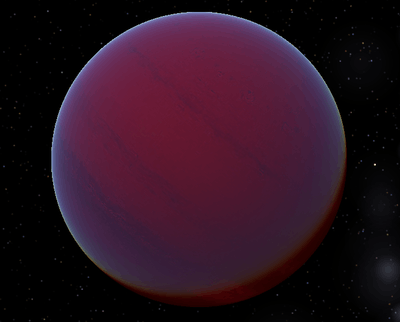HD 29587
 An artist's concept of brown dwarf HD 29587 B. | |
| Observation data Epoch J2000.0 Equinox J2000.0 | |
|---|---|
| Constellation | Perseus |
| Right ascension | 04h 41m 36.3177s |
| Declination | +42° 07′ 06.493″ |
| Apparent magnitude (V) | 7.29 |
| Characteristics | |
| Spectral type | G0V |
| Variable type | none |
| Details | |
| Mass | 1.09 M☉ |
| Radius | 0.88 R☉ |
| Luminosity | 0.811 L☉ |
| Temperature | 5840 K |
| Other designations | |
HIP 21832, TYC 2901-00064-1, HD 29587, BD+41 931, SAO 39690, 2MASS J04413631+4207065 | |
| Database references | |
| SIMBAD | data |
| Exoplanet Archive | data |
| Extrasolar Planets Encyclopaedia | data |
HD 29587 is a Sun-like star located approximately 93 light-years away in the constellation of Perseus. The star is known to host a brown dwarf companion.[1]
| Companion (in order from star) |
Mass | Semimajor axis (AU) |
Orbital period (days) |
Eccentricity | Inclination | Radius[1] |
|---|---|---|---|---|---|---|
| b | ≥55 MJ | 2.54 | 1481 | 0.33 | — | — |
References
- 1 2 Mazeh; Latham, David W.; Stefanik, Robert P. (1996). "Spectroscopic Orbits for Three Binaries with Low-Mass Companions and the Distribution of Secondary Masses near the Substellar Limit". Astrophysical Journal. 466: 415–427. Bibcode:1996ApJ...466..415M. doi:10.1086/177521.
This article is issued from Wikipedia - version of the 8/29/2016. The text is available under the Creative Commons Attribution/Share Alike but additional terms may apply for the media files.